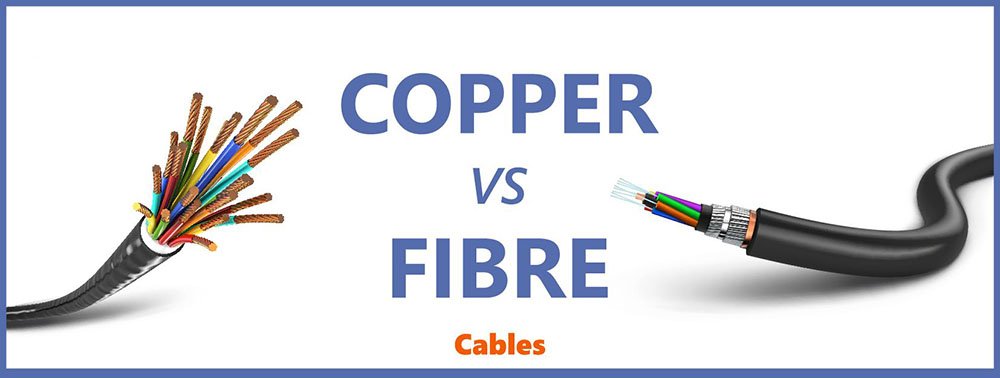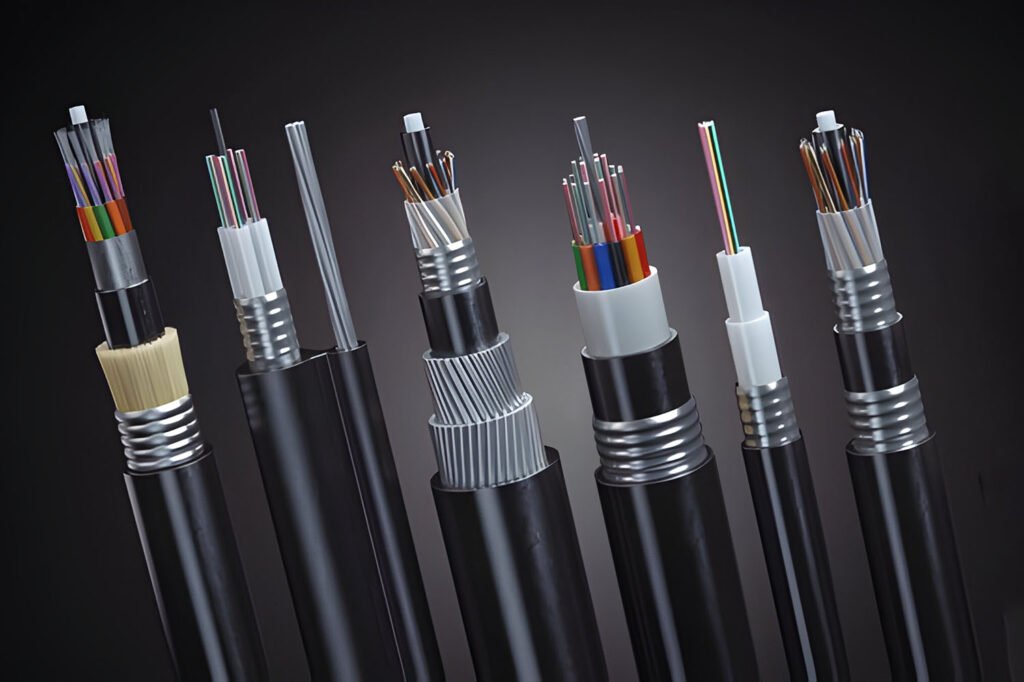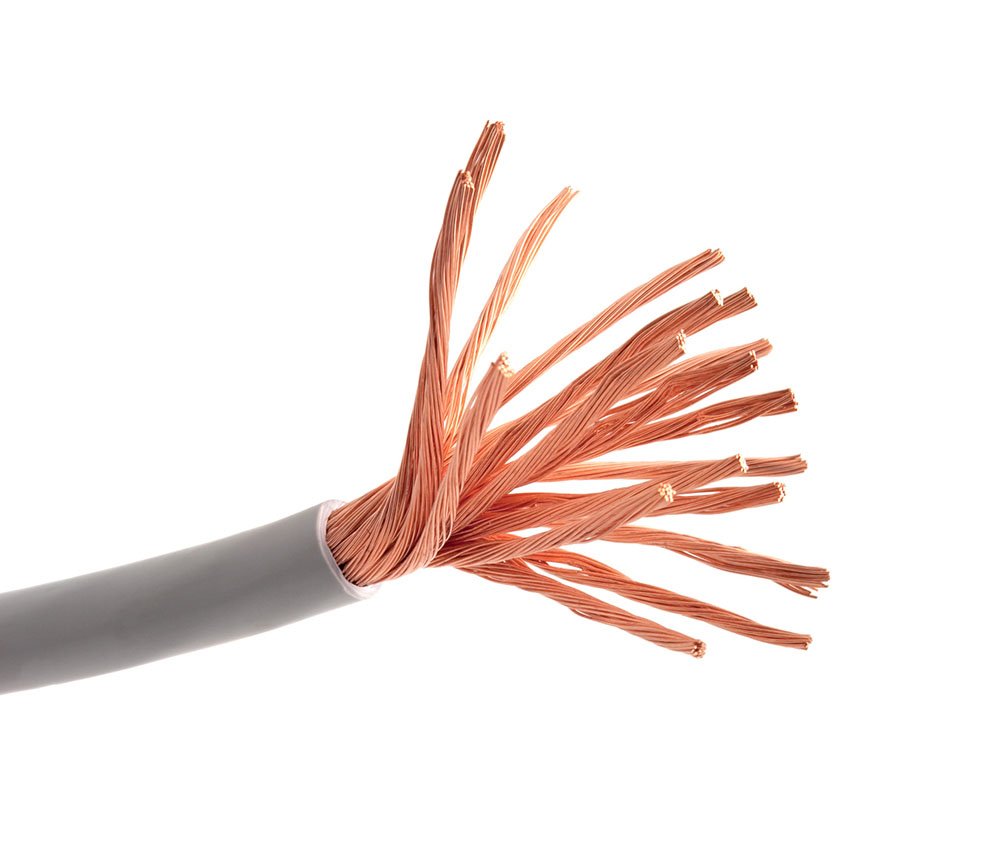Trying to decide between fiber vs cable internet for your home or office? It’s a big choice—your internet speed, reliability, and even cost depend on it. In the debate of internet cable vs fiber, both have their strengths, but they work in very different ways. Fiber internet vs cable often comes down to what you need—blazing speed or a budget-friendly option. This guide breaks down the difference between fiber and cable internet from all angles—how they work, their speeds, costs, and more—to help you pick the best fit. With solutions from CommMesh, let’s dive into cable internet vs fiber and find out which one’s right for you!
How Does Fiber Internet vs Cable Internet Work?

Let’s start with the basics of fiber vs cable internet—how do they actually get data to your device? In fiber internet vs cable, fiber uses light to send data through glass strands—called fiber optic cables. A laser turns your data—like a video stream—into light pulses—e.g., at 1310 nm—that travel through the optical cable—e.g., 20 km with just 0.2 dB/km loss. At your end, a box (an ONT, ~$100) turns the light back into data—e.g., 1 Gbps for your Wi-Fi—making internet cable vs fiber a clear contrast in tech.
On the other hand, cable internet vs fiber shows cable using copper coaxial cables—the kind used for cable TV. It sends data as electrical signals—e.g., 1 GHz frequency—through the copper, but it loses signal over distance—e.g., 10 dB/km—limiting range to about 5 km for 1 Gbps. The difference between fiber and cable internet here is huge—fiber’s light-based system is faster and more efficient, while cable’s electrical signals are more prone to interference—e.g., 20% signal drop in storms—setting the stage for their rivalry.
What’s the Speed Difference Between Fiber and Cable Internet?
Speed is a big factor in internet cable vs fiber—so what’s the difference between fiber and cable internet when it comes to how fast they are? Fiber internet vs cable isn’t even close—fiber can hit 1 Gbps to 10 Gbps—e.g., downloading a 4K movie in 30 seconds—over 20 km with minimal loss—e.g., 0.2 dB/km. It’s built for high demand—e.g., streaming, gaming, and working on multiple devices—without slowing down.
In cable internet vs fiber, cable tops out at 1 Gbps—e.g., 500 Mbps during peak hours—because it shares bandwidth with your neighbors—e.g., a 1 Gbps line split across 50 homes. It also fades faster—e.g., 100 Mbps at 5 km—due to copper’s limits. The difference between fiber and cable internet shines here—fiber’s dedicated speed—e.g., 1 Gbps steady—beats cable’s shared, inconsistent performance—e.g., 200 Mbps at busy times—making fiber the champ for speed in fiber vs cable internet.

How Reliable Is Cable Internet vs Fiber?
Reliability matters in fiber vs cable internet—which one keeps you connected? In cable internet vs fiber, fiber wins hands down. Fiber optic cables use glass, which doesn’t care about weather—e.g., no signal loss in rain—delivering steady 1 Gbps over 20 km—e.g., 0.4 dB total loss. They’re also immune to electrical interference—e.g., no noise near power lines—unlike copper, which can pick up static—e.g., 10% signal drop near a 50 kV line.
Meanwhile, internet cable vs fiber shows cable’s weakness—copper coaxial cables are prone to outages—e.g., 20% signal loss in storms—because they conduct electricity—e.g., lightning can fry your modem, costing $500 to replace. The difference between fiber and cable internet is clear—fiber’s durability—e.g., 99.99% uptime—makes it more reliable than cable’s 99.9%—a key point in fiber internet vs cable for anyone needing a stable connection.
What Are the Costs of Internet Cable vs Fiber?
Let’s talk money in fiber vs cable internet—how do the costs stack up? In internet cable vs fiber, fiber’s upfront cost is higher—e.g., $260 per home for ISPs. A 50 km fiber line—$0.50/m—costs $25,000—plus $5000/km labor—e.g., $275,000 total—for 5000 homes—$55/home. Add drop cables—$100 each—e.g., $500,000—and equipment—e.g., $505,000 for ONTs—totaling $1.3 million—$260/home. For users, fiber internet vs cable means $50/month for 1 Gbps—e.g., $600/year.

Cable internet vs fiber is cheaper to install—e.g., $50/home—using existing coax—e.g., $1000/km vs. fiber’s $5000/km—totaling $250,000 for 5000 homes. But user costs are similar—e.g., $40/month for 500 Mbps—$480/year—though maintenance is pricier—e.g., $10,000/km vs. fiber’s $1000/km. The difference between fiber and cable internet shows fiber’s long-term savings—e.g., $1.3 million recouped in 5 years—making fiber vs cable internet a better investment despite higher setup costs.
What Are the Pros and Cons of Fiber Internet vs Cable?
Let’s weigh the fiber internet vs cable debate with some pros and cons.
- Fiber Pros: 10 Gbps speeds—e.g., 1 Gbps steady—over 20 km—e.g., 0.4 dB loss—reliable—e.g., no storm outages—future-proof—e.g., 10G PON upgrades.
- Fiber Cons: High install cost—e.g., $260/home—not everywhere—e.g., 10% rural U.S. (2023 FCC).
- Cable Pros: Cheaper setup—e.g., $50/home—widely available—e.g., 90% U.S. coverage—decent speed—e.g., 500 Mbps.
- Cable Cons: Slower—e.g., 200 Mbps peak times—less reliable—e.g., 20% storm loss—shared bandwidth—e.g., 1 Gbps split 50 ways.
In internet cable vs fiber, fiber’s speed and reliability shine—e.g., 1 Gbps for a family—while cable’s affordability—e.g., $40/month—fits tighter budgets—highlighting the difference between fiber and cable internet—CommMesh at CommMesh offers fiber solutions.
How Available Is Cable Internet vs Fiber?
Availability shapes cable internet vs fiber—where can you get them? In internet cable vs fiber, cable is more widespread—e.g., 90% of U.S. homes have access (2023 FCC)—because coax cables are already in place from cable TV—e.g., $1000/km to upgrade vs. fiber’s $5000/km. It’s common in cities and suburbs—e.g., 500 Mbps plans for $40/month—making fiber vs cable internet lean toward cable for accessibility.
Fiber internet vs cable lags in reach—e.g., 50% U.S. homes by 2023—due to high install costs—e.g., $260/home—especially in rural areas—e.g., 10% coverage. But fiber’s growing—e.g., 60% by 2030 (Statista)—as ISPs expand—e.g., 1 Gbps plans for $50/month in cities. The difference between fiber and cable internet here is availability—cable’s everywhere now, but fiber’s catching up fast.

Which Is Better for Gaming: Fiber vs Cable Internet?
For gamers, fiber vs cable internet matters a lot—which is better? In fiber internet vs cable, fiber wins with low latency—e.g., 5 ms vs. cable’s 20 ms—crucial for fast-paced games—e.g., no lag in a 1 ms reaction game. It also offers steady 1 Gbps—e.g., downloading a 50 GB game in 6 minutes—vs. cable’s 200 Mbps peak—e.g., 30 minutes—due to shared bandwidth.
Cable internet vs fiber struggles—e.g., 50 Mbps drops during peak hours—causing lag—e.g., 100 ms spikes—frustrating for online play. The difference between fiber and cable internet is stark—fiber’s speed and stability—e.g., 99.99% uptime—make it the gamer’s choice in internet cable vs fiber, ensuring smooth play even with multiple devices running.
Conclusion: Making the Call on Fiber vs Cable Internet
Fiber vs cable internet comes down to your needs—speed or savings, reliability or reach—like picking the right tool for the job. We’ve explored the difference between fiber and cable internet—from how they work to their costs and gaming perks—showing internet cable vs fiber isn’t a one-size-fits-all. Fiber internet vs cable leans toward fiber for speed and stability—e.g., 1 Gbps with no hiccups—while cable internet vs fiber offers affordability and availability—e.g., $40/month almost anywhere. With CommMesh providing fiber at $0.50/m, you can decide—go fiber for the future or cable for now—and get connected your way!

